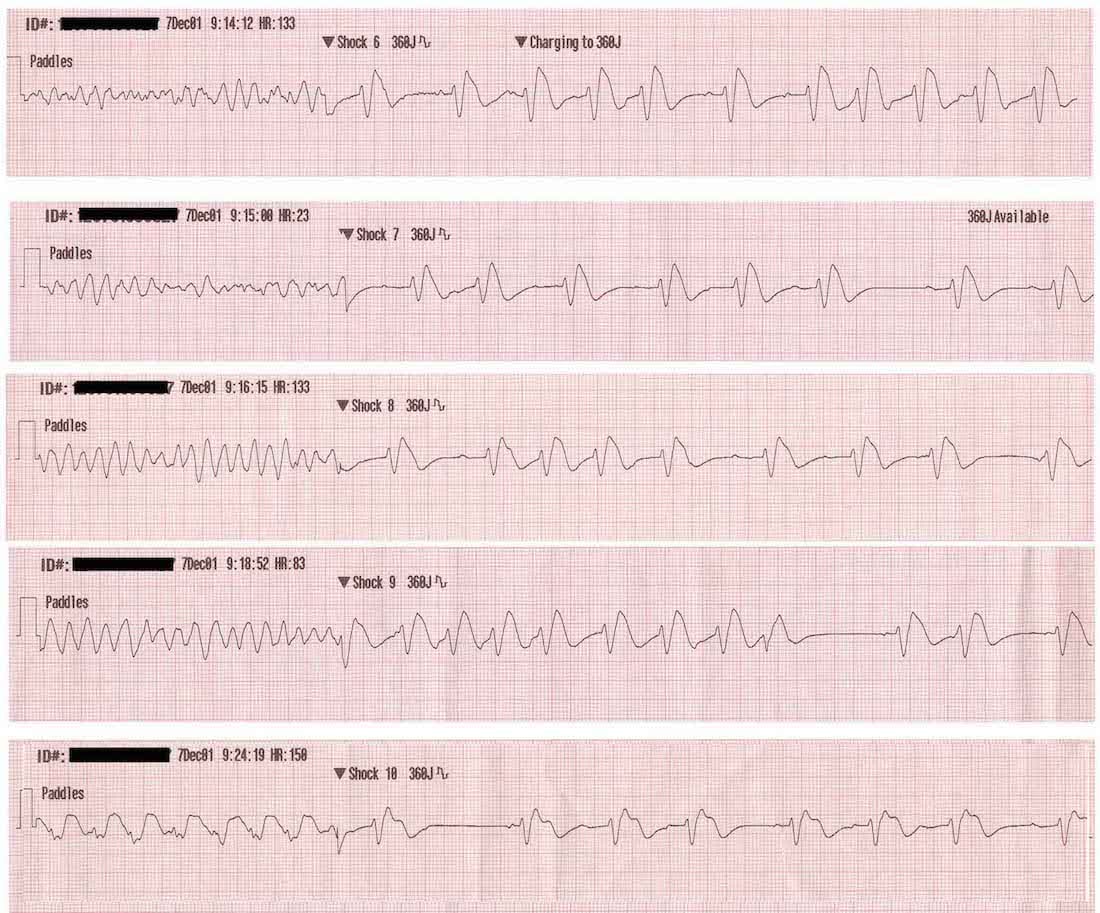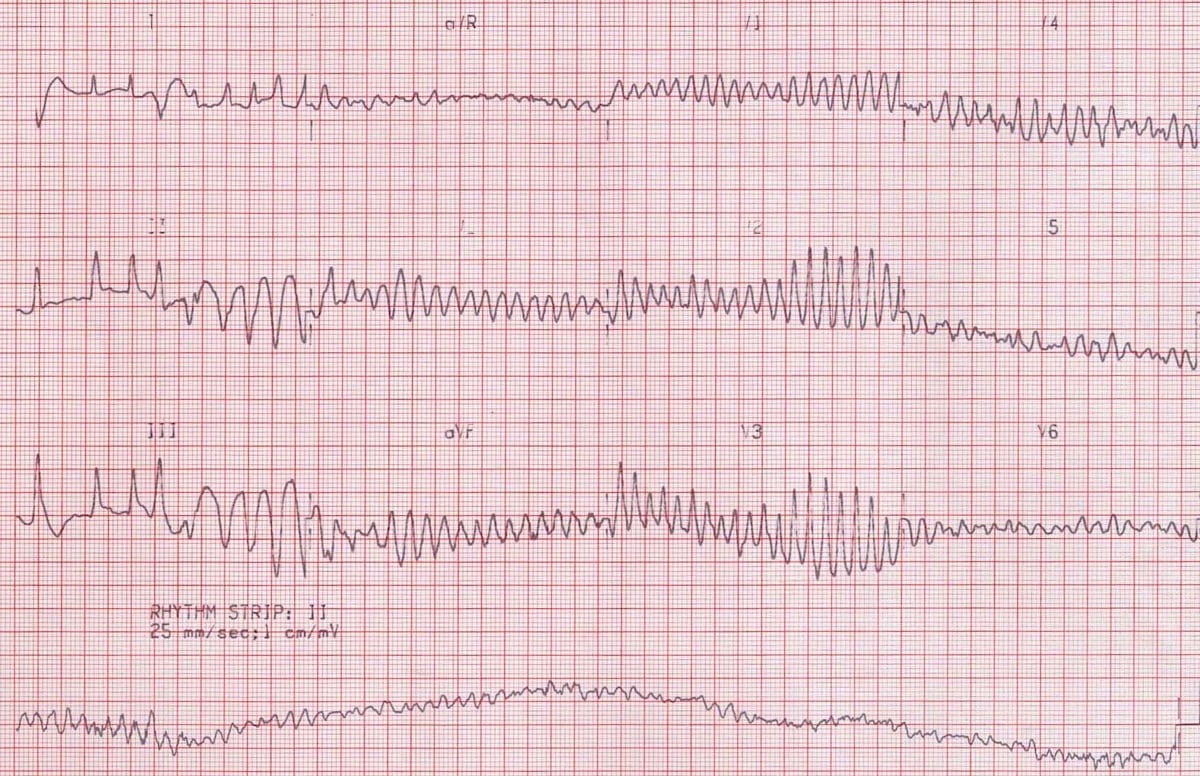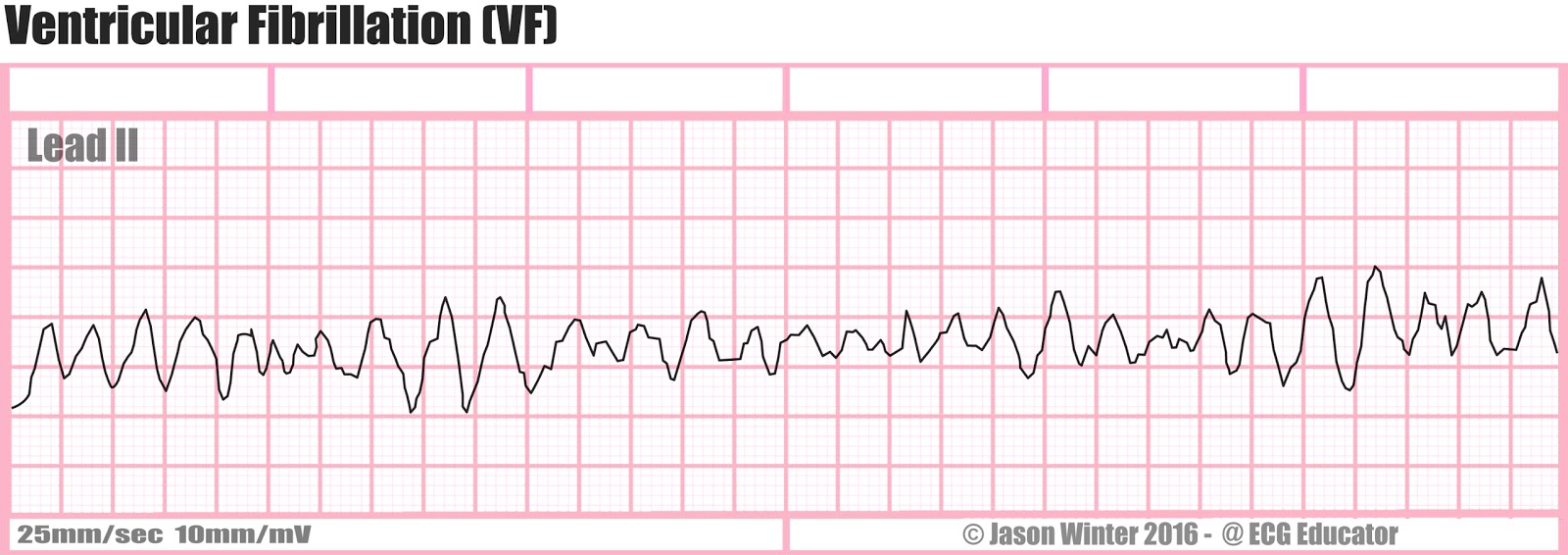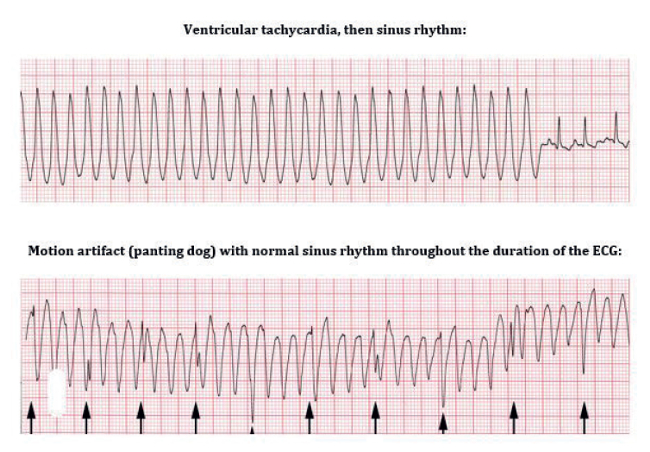Ventricular Tachycardia V Fib Ecg

Ventricular fibrillation v fib or vf is an abnormal heart rhythm in which the ventricles of the heart quiver instead of pumping normally.
Ventricular tachycardia v fib ecg. Wide qrs complexes qrs duration 0 12 s. Differences between patients with ventricular tachycardia and ventricular fibrillation as assessed by signal averaged electrocardiogram radionuclide ventriculography and cardiac mapping. This is followed by death in the absence of treatment. Treatment may involve cpr chest compressions and use of a defibrillator.
Ventricular tachycardia with rate 250 beats per minute is referred to as ventricular flutter. Healthcare professionals should follow facility protocols. Ventricular tachycardia vs ventricular fibrillation arrhythmia means irregular cardiac rhythm and slow arrhythmias are called bradyarrhythmias and fast ones are called tachyarrhythmias there are various types of arrhythmias. This rapid and irregular electrical activity renders the ventricles unable to contract in a synchronised manner resulting in immediate loss of cardiac output.
However on closer inspection there are signs of av dissociation with superimposed p waves visible in v1. Types of ventricular tachycardia. The ventricles suddenly attempt to contract at rates of up to 500 bpm. Ventricular tachycardia refers to a wide qrs complex heart rhythm that is a qrs duration beyond 120 milliseconds originating in the ventricles at a rate of greater than 100 beats per minute.
Ventricular fibrillation results in cardiac arrest with loss of consciousness and no pulse. A dangerous condition related to ventricular tachycardia is ventricular fibrillation v fib. Common symptoms of afib are weakness dizziness anxiety and shortness of breath. Although there is a broad complex tachycardia hr 100 qrs 120 the appearance in v1 is more suggestive of svt with aberrancy given that the the complexes are not that broad 160 ms and the right rabbit ear is taller than the left.
Atrial fibrillation afib and ventricular fibrillation vfib are both heart conditions that are referred to as arrhythmias. The ecg allows for subclassification of ventricular tachycardia. Vfib is a medical emergency with short lived symptoms of sudden collapse and death if not treated immediately. Ventricular fibrillation is a life threatening emergency and must be treated immediately by qualified medical professionals.
It is due to disorganized electrical activity. In v fib your lower heart chambers contract in a very rapid and uncoordinated manner. They are atrial tachycardia monofocal or multifocal atrial fibrillation atrial flutter atrioventricular nodal re entry tachycardia atrioventricular re entry. Journal of the american college of cardiology 11 2 276 283.
Ventricular fibrillation vf is the the most important shockable cardiac arrest rhythm. Ventricular tachycardia with rate 100 to 120 beats per minute is referred to as slow ventricular tachycardia. For more information review the acls algorithms.

















